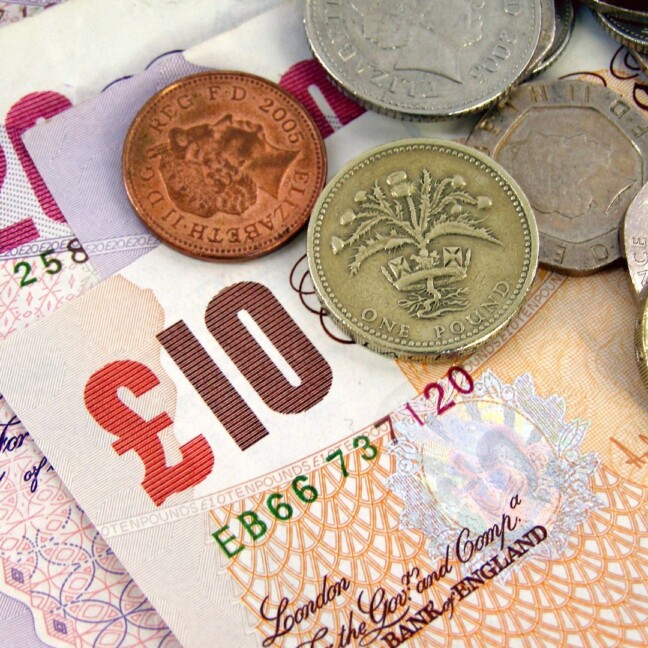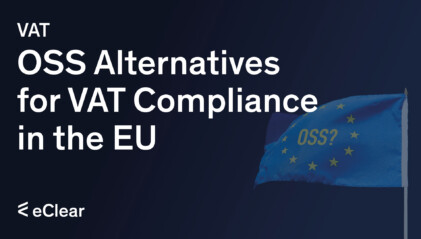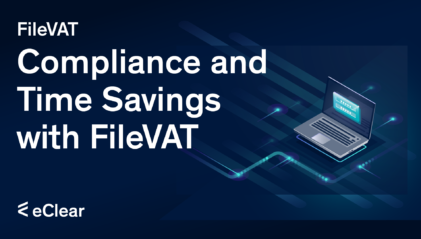In the bustling marketplace of the United Kingdom, a silent player, the ValueVAT), significantly influences the economic landscape. VAT, a tax levied on the value added at each stage of production or distribution of goods and services, is an integral part of the country’s fiscal structure.
VAT is a ubiquitous presence, added to most products and services sold by VAT-registered businesses. It is a tax that companies collect on behalf of the government from their customers. The VAT a business pays is usually the difference between any VAT it has paid to other companies and the VAT it has charged its customers. If a business has charged more VAT than it has paid, it must pay the difference to HM Revenue and Customs (HMRC). Conversely, HMRC will typically repay the difference if a company has paid more VAT than charged.
A Brief History of VAT in the United Kingdom
The history of VAT in the UK is a fascinating journey. VAT was introduced in 1973, replacing the purchase tax, a 33.3% tax on ‘luxury’ goods brought in during 1940 to discourage waste. Over the years, the standard rate of VAT has seen several changes, reflecting the economic and political climate of the times. It was initially reduced from 10% to 8% in 1974, and a higher 25% rate was introduced on certain goods. These rates were later merged into a single 15% rate in 1979, which was raised to 17.5% in 1991 and again to 20% in 2011 after a temporary cut to 15% between December 2008 and December 2009.

VAT Rates
Standard Rate (20%)
This is the rate applied to most goods and services.
- Electronics such as televisions, computers, and smartphones
- Furniture like sofas, tables, and chairs
- Clothing and footwear (not including children’s clothes)
- Alcohol and tobacco
- Most vehicles, including cars and motorcycles
- Professional services such as lawyers, accountants, and consultants
Reduced Rate (5%)
Some goods and services are subject to a reduced VAT rate.
- Children’s car seats
- Home energy products and services, including insulation and solar panels
- Some forms of public transport
- Certain types of property renovation and alteration
- Mobility aids for the elderly
Zero Rate (0%)
Certain goods and services are zero-rated, meaning no VAT is charged.
- Most food items, excluding restaurant meals and certain types of snacks
- Children’s clothing and footwear
- Books, newspapers, and magazines
- Prescription medicines
- Public transport in certain circumstances
VAT Registration Thresholds
In VAT, the registration thresholds play a pivotal role in determining whether a business needs to register for VAT. The total VAT taxable turnover threshold is currently set at £85,000. If your business’s total VAT taxable turnover for the last 12 months was over £85,000, or you expect your turnover to exceed £85,000 in the next 30 days, you must register for VAT.
Annual Taxable Turnover Threshold
The annual taxable turnover threshold is slightly lower, set at £79,000. If your business’s total VAT taxable turnover for the last 12 months was over this amount, you must register for VAT. This threshold ensures that companies with a substantial annual turnover are included in the VAT system, contributing to the government’s revenue.
Special Thresholds for Certain Businesses
Beyond these general thresholds, there are special thresholds for certain types of businesses. For instance, if you only sell goods or services exempt from VAT or ‘out of scope’ but buy goods for more than £85,000 from EU VAT-registered suppliers to use in your business, you’ll need to register for VAT. This includes businesses such as farmers and landlords, who may have significant expenses but whose primary income sources are VAT exempt.
VAT Return Filing Obligations
In VAT, the filing obligations are a crucial aspect that businesses must be aware of. A VAT Return is a form companies must fill in to inform HM Revenue and Customs (HMRC) about the amount of VAT they’ve charged and how much they’ve paid to other businesses.
Frequency of VAT Returns
Businesses usually need to send a VAT Return to HMRC every three months, known as the ‘accounting period’. This quarterly filing requirement ensures that companies regularly update HMRC on their VAT transactions, promoting transparency and compliance.
Deadlines for Filing VAT Returns
The deadline for submitting your return online is usually one calendar month and seven days after the end of an accounting period. This is also the deadline for paying HMRC. It’s important to note that businesses need to allow time for the payment to reach HMRC’s account. For instance, if your accounting period ends on 31st March, you must submit your VAT return and pay by 7th May.
Penalties for Late Filing or Non-Payment
Failure to meet these obligations can result in penalties. If you register late, you must pay VAT on any sales you’ve made since the date you should have registered. You might also need to pay a penalty, depending on how much you owe and how late your registration is.
VAT Payment Obligations
In the intricate world of VAT, understanding payment obligations is crucial for businesses. These obligations dictate when and how companies must pay their VAT to HM Revenue and Customs (HMRC).
Payment Deadlines for VAT Returns
Businesses must pay their VAT bill by the deadline on their VAT return. The payment must reach HMRC’s bank account by this deadline. If the deadline falls on a weekend or bank holiday, the payment must arrive in HMRC’s bank account on the last working day before it. There are different deadlines if businesses use the Annual Accounting Scheme or make payments on account.
Interest Charges for Late Payments
Failure to meet these payment obligations can result in interest charges. Suppose a business needs to catch up with its VAT payment. In that case, HMRC will charge interest on the outstanding amount from the date the payment was due until the date the payment was received.
Penalties for Failure to Pay VAT
In addition to interest charges, businesses may face penalties for failing to pay VAT on time. If a company registers late for VAT, it must pay VAT on any sales it’s made since the date it should have registered. The business might also need to pay a penalty, depending on how much it owes and how late its registration is.
Input Tax Credits
In VAT, Input Tax Credits (ITC) are pivotal in the UK’s taxation system. They serve as a mechanism to prevent the cascading effect of taxes, ensuring that businesses are not unduly burdened with the VAT they pay during their economic activities.
Eligibility Criteria for Input Tax Credits
To be eligible for claiming ITC, a business must be VAT registered, and the goods or services purchased must be used for business purposes. The VAT paid on these purchases is considered ‘input tax’. However, there are certain exceptions. For instance, VAT cannot be reclaimed on entertainment expenses, cars (with some exceptions), and goods and services used for personal reasons.
Documentary Evidence Required for Claiming Input Tax Credits
When claiming ITC, the UK government requires businesses to provide documentary evidence. This evidence typically takes the form of a valid VAT invoice from the supplier. The invoice must contain specific details such as the supplier’s VAT number, the date of the invoice, a description of the goods or services supplied, and the VAT charged. It’s worth noting that businesses cannot claim ITC based on pro forma invoices, quotes, or estimates.
Time Limits for Claiming Input Tax Credits
Regarding time limits, businesses generally have four years from receiving the goods or services to claim ITC. However, this period can be extended in certain circumstances, such as if the business can prove that it was not reasonably practicable to make a claim earlier.
Capital Goods Scheme
In the intricate world of VAT, the Capital Goods Scheme (CGS) plays a significant role in the UK’s taxation system. The scheme allows businesses to adjust the amount of VAT they reclaim over several years on certain capital assets.
Definition of Capital Goods
In the context of the CGS, capital goods include land, buildings, civil engineering work, computers and computer equipment, and aircraft, ships, boats, or other vessels. For instance, if a business spends £250,000 (excluding VAT) or more on buying land, constructing a building, or refurbishing a building, it falls under the purview of the CGS. Similarly, individual computers or items of computer equipment that cost £50,000 (excluding VAT) or more are also included in the scheme.
Eligibility Criteria for the Capital Goods Scheme
To be eligible for the CGS, a business must be VAT registered, and the capital goods must be used for business purposes. However, the scheme does not apply if the assets are acquired just for resale or if the assets are used solely for non-business purposes.
Advantages and Disadvantages of the Capital Goods Scheme
The CGS offers several advantages. It allows businesses to spread the initial VAT claimed over many years, benefiting cash flow. If the proportion of taxable supplies increases, businesses can reclaim more VAT. However, they may have to repay some VAT if it decreases.
On the flip side, the CGS can be complex to navigate and administer due to the need to track and adjust VAT over many years. It also requires businesses to maintain detailed records of the use of capital goods over the adjustment period.
VAT and the Digital Economy
The digital economy has revolutionised the way we conduct business, and the realm of VAT is no exception. VAT has had to adapt from online sales and digital goods to overseas vendors and digital tax systems to keep pace with these changes.
Impact of VAT on Online Sales and Digital Goods
With the advent of the digital economy, VAT has had to evolve to accommodate new forms of commerce. In the UK, VAT is applied at the standard rate of 20% to the sale of digital services and goods. This includes a wide range of digital services such as live-streaming, telephone services given through the internet, access to the internet, supplies of images or text, music, films, games, online magazines, website supply or web hosting services, and advertising space on a website.
Overseas Vendors Selling Digital Goods to UK Customers
Overseas vendors selling digital goods to UK customers are also subject to VAT. The place of supply of cross-border digital services is determined by the consumer’s location, which is usually where the consumer lives. Foreign companies should apply to register for VAT with the local tax authorities when they reach the applicable thresholds. VAT registration for non-resident suppliers of digital services has no registration threshold.
Making Tax Digital (MTD) for VAT
The government has introduced Making Tax Digital (MTD) for VAT to modernise the UK tax system. This initiative requires all VAT-registered businesses to maintain digital records and submit VAT returns using compatible software. The aim is to make tax administration more effective, efficient, and easier for taxpayers. Currently, all VAT-registered businesses should be signed up for MTD for VAT.
Brexit and VAT
The UK’s departure from the European Union has significantly changed the VAT landscape. From new rules and regulations to potential business risks, Brexit has reshaped how VAT operates in the UK.
Impact of Brexit on VAT Rules and Regulations
Brexit has led to a shift in VAT rules and regulations in the UK. One of the most significant changes is introducing a new model for the VAT treatment of goods arriving in the UK. For goods sold directly to customers in the UK from outside the UK, UK supply VAT is now charged at the point of sale for consignments valued at £135 or less. For consignments valued at more than £135, normal VAT and customs rules apply on importing the goods into the UK.
Changes to VAT Legislation Following the UK’s Withdrawal from the EU
Following the UK’s withdrawal from the EU, changes have been made to VAT legislation. For instance, overseas sellers who own goods of any value in the UK at the point of sale must register and account for VAT on any sales they make directly to customers in the UK or Northern Ireland. The low-value consignment relief, an import VAT exemption for goods valued at £15 or less, has been removed.
Uncertainty and Potential Risks Facing Businesses After Brexit
Brexit has brought about a degree of uncertainty and potential risks for businesses. The changes to VAT rules and regulations require companies to adapt their processes and systems, which can be complex and time-consuming. There is also the risk of increased costs due to changes in VAT treatment and potential delays at the border due to new customs procedures.
Furthermore, the Making Tax Digital (MTD) initiative, which requires all VAT-registered businesses to maintain digital records and submit VAT returns using compatible software, has added another complexity for companies in the post-Brexit era.
Regional Peculiarities
While largely uniform across the country, the VAT system in the UK does exhibit some regional peculiarities. The various regions’ unique economic and business landscapes primarily drive these differences.
Regional Variations in Business Sectors
Different regions in the UK have varying concentrations of business sectors, which can influence the application of VAT. For instance, as a global financial hub, London has a high concentration of financial services firms, mainly exempt from VAT. On the other hand, regions with a strong presence of manufacturing or retail businesses, sectors where VAT is applicable, may see a higher volume of VAT transactions.
Impact of Devolved Powers
The devolved administrations in Scotland, Wales, and Northern Ireland also have the power to set specific tax rates, potentially leading to regional variations in VAT. However, this power has yet to be used to date.
Regional Differences in Online Sales
With the rise of the digital economy, there has also been a growth in online sales, which can have VAT implications. The level of online sales can vary between regions, influenced by factors such as internet access and consumer behaviour. This could lead to regional differences in the collection of VAT on digital services.
UK’s official VAT authority
The Value Added Tax in the United Kingdom is managed by HM Revenue and Customs (HMRC), which operates through various departments to handle different aspects of VAT.
For general VAT enquiries, you can contact HMRC at their postal address BX9 1WR, United Kingdom, or +44 (0) 300 200 3700. They also offer an online platform for VAT enquiries, which can be accessed through your VAT online account on their website.







